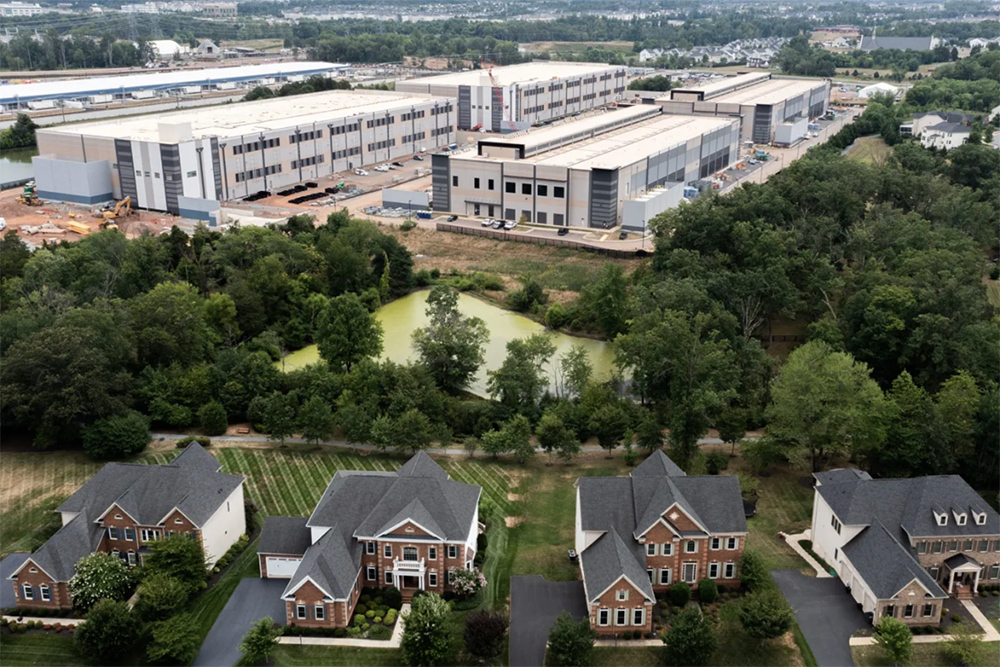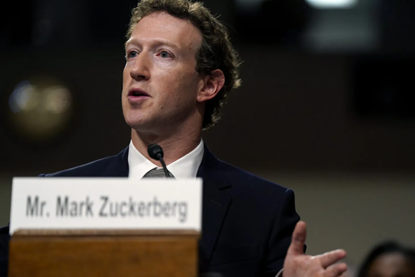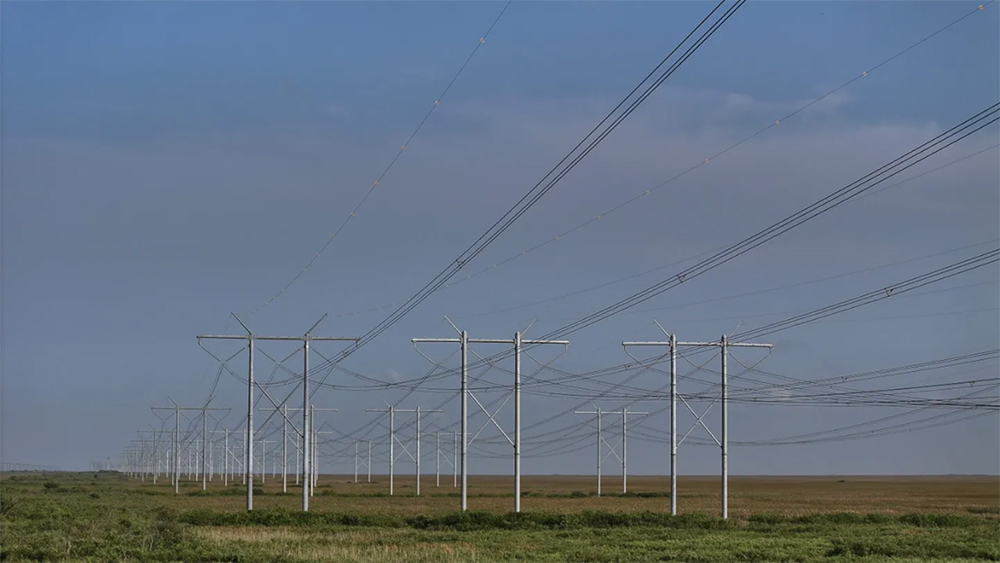
十五年前,数据中心规模庞大,堪比沃尔玛购物广场,后来近乎十个开市客那么大。如今,由于人工智能对电力的巨大需求,它们已演变成比五角大楼还大十倍的庞然大物,其规模甚至能与一座小型城市相媲美。随着科技公司竞相开发规模最大、性能最强的人工智能模型,同时美国政府大力推动本土数据中心建设,这些超大型数据中心正以惊人的速度拔地而起。
为了满足人工智能的发展需求,数据中心对电力的需求极为庞大。在这股类似淘金热的浪潮中,美国各地的电力公司,尤其是南部地区的电力公司,正寻求将这些人工智能数据中心引入本州来满足这一需求。大型科技公司客户通过签订长期合同为电力公司提供了稳定且可预期的收入保障。它们还能让受费率管制的公用事业公司有理由开展全新的利润受限的发电项目,并通过创造地区就业机会和投资带来经济发展红利。
其中一家主要参与者是总部位于路易斯安那州的安特吉公司,作为跻身《财富》世界500强的公用事业公司,它为路易斯安那州、密西西比州、阿肯色州和得克萨斯州的客户提供服务。2024年12月,脸书(Facebook)母公司Meta宣布了一项计划:拟在路易斯安那州东北部乡村地区里奇兰教区(Richland Parish)斥资100亿美元新建人工智能数据中心,并表示这将为这个陷入困境、经济萧条的地区创造500个新的长期全职工作岗位。该数据中心占地面积超过400万平方英尺(约合37.2万平方米),将成为Meta迄今为止最大的数据中心。为了满足其能源需求,安特吉公司计划斥资30亿美元在该数据中心周边新建三座天然气发电厂。自消息公布以来,安特吉公司股价创下历史新高,今年迄今为止上涨了14%。该股在过去12个月里上涨了近75%,目前处于几十年来的最高水平。
在近期接受《财富》杂志采访时,安特吉公司首席执行官德鲁·马什表示,“如果算一下账,”由于Meta数据中心全天候运行需要2千兆瓦电力,它将成为安特吉公司最大的客户。
马什还称赞了公司在吸引Meta落户路易斯安那州过程中发挥的作用。他说:“作为一家受费率管制的公用事业公司,我们深度参与到任何可能进驻路易斯安那州、阿肯色州、密西西比州或我们所在的东得克萨斯州地区的行业的经济发展中,这些行业的电力需求可能极为庞大。我们与全州的社区建立了联系,并与州长、议会,以及公共服务委员会和其他所有相关的监管机构建立了联系。”
到目前为止,安特吉公司已成功吸引了亚马逊云科技(AWS)和Meta
安特吉公司历来擅长为化工炼油厂、油气加工设施等大型高耗能工业客户提供服务。但与目前的大型科技数据中心相比,即便是这些传统的高耗能客户也显得逊色不少。

马什回忆说,十年前,许多投资者询问该公司是否会迎来“大量数据中心”作为新增客户。当时的数据中心虽然规模不小,但远不及现在这么庞大。
马什说:“我的回答是,我们现有的客户完全有能力吸纳数据中心的用电需求,毕竟那时的数据中心规模尚小。”
亚马逊的到来改变了这一切:2019年,安特吉公司密西西比分公司开始与亚马逊云计算部门亚马逊云科技展开洽谈,探讨在该州设立其最大的数据中心园区之一。五年后的2024年,安特吉公司宣布亚马逊在麦迪逊县斥资100亿美元的投资项目堪称“密西西比州历史上最大的经济发展成果”之一。除了与亚马逊云科技合作外,安特吉公司还与密西西比州发展局、州长泰特·里夫斯(Tate Reeves)以及密西西比州议会密切合作,后者通过并签署了重要立法,使密西西比州成为对该公司极具吸引力的选址目标。
与亚马逊达成的协议使安特吉公司处于有利地位,促使Meta考虑位于富兰克林农场(一处前农业用地)、占地2250英亩(约合9105445.8平方米)的场地。《新奥尔良时报》近期的一篇报道详细描述了2024年1月,在听闻Meta正在美国南部寻址建设数据中心后,安特吉公司如何在其新奥尔良总部接待了六位Meta高管。
根据该报道,Meta向安特吉公司表示,他们会考虑路易斯安那州作为数据中心的潜在选址,但该州必须迅速采取行动,并提出有吸引力的方案。安特吉公司的高管与新当选的州长杰夫·兰德里(Jeff Landry)合作,与立法机构领导人、内阁部长和地方政府官员达成协议。最终,Meta在服务器和设备采购方面的数十亿美元支出得以享受销售税的豁免优惠。
Meta的一位发言人向《财富》杂志提供了如下声明:“我们在路易斯安那州里奇兰教区的数据中心已开工建设,对此我们感到非常兴奋。选择此地,我们基于多方面的考量——这里基础设施便利、电网供应可靠、商业环境友好,还有优秀社区合作伙伴助力我们推进这一项目。”

安特吉公司的盈利动机与Meta的数据中心扩张计划不谋而合
众多像安特吉公司这样受费率管制的公用事业企业,往往采用垂直一体化的垄断经营模式。这意味着它们掌控着发电的发电厂,还掌握着高压与低压电力的输送网络。其费率由所在州的公用事业委员会制定,包括针对Meta这样的企业客户的费率(这些客户能通过签订长期稳定的合同来享受特定的费率优惠)。但它们也能从新建发电厂等基础设施投资的管制回报中获利。
这就催生了建设动力:为公用事业公司提供咨询服务的West Monroe咨询公司执行合伙人贝齐·索伦·琼斯(Betsy Soehren Jones)解释说,州监管机构为资本投资设定了允许的最大收益率。这意味着公用事业公司能够从其基础设施投资中获得管制回报率(如7%),但它们需要投资新资产(如发电厂或输电线路)来增加总收益。
琼斯在接受《财富》杂志采访时表示:“它们必须新建基础设施才能获得收益。假设我是安特吉公司,那么我所有资本支出的回报率都被限定在7%,若是没有新公司进入我的服务领域,我的收入就会停滞不前。”
马什表示,业务覆盖各个环节是安特吉公司在达成数据中心合作协议方面的关键优势。他说:“作为垂直一体化的公用事业公司,我们是一站式服务提供商,能够提供所有技术服务,涵盖从发电、输电、零售接入服务,到与区域输电运营商沟通,直至与所有利益相关方对接。”
但批评人士称,这种垄断以及与监管机构的密切关系,最终可能会将成本转嫁到消费者身上。
Alliance for Affordable Energy的执行董事洛根·伯克(Logan Burke)说:”安特吉公司正积极推动大规模建设,并制定了在该州新建大量天然气设施的宏伟蓝图。”“它们有新建设施以实现盈利的动机,因为这是其商业模式的一部分。”她补充说,虽然新建天然气发电厂需要得到监管委员会的批准,但”听起来似乎已成定局"。
她说,这让人想起2024年初密西西比州州长里夫斯通过立法吸引亚马逊数据中心投资的场景。她解释说:“这一立法举措实际上赋予了安特吉公司极大的自主权,允许它们为了满足这一特定客户的需求而建造任何必要的设施,不论这些设施的具体需求如何,而审慎的审查程序则被安排在了后续阶段。”她补充说,这“削弱了密西西比州公共服务委员会对于该公用事业公司为包括住宅和商业客户在内的所有客户群体提供服务而建造设施的监管能力。”
琼斯表示,各州监管机构与像安特吉公司这样的垂直一体化垄断公用事业公司之间的关系密切程度,因州而异。“监管委员会没有统一的模式,”她说。“有的委员会设有五名成员,有的则只有三名。有的成员由州长任命,有的则不是。”以加州为例,“那里的监管委员会会对公用事业公司的举措进行严格的质询,”她说,并补充说,伊利诺伊州和纽约州的情况也颇为相似。她强调道:“这与州的政治倾向(蓝州或红州)无关,实际上取决于委员会的运作方式。”
现在,Alliance for Affordable Energy和忧思科学家联盟(Union for Concerned Scientists)正在敦促路易斯安那州的监管机构否决安特吉公司“快速推进”在里奇兰教区新建三座天然气发电厂以服务Meta数据中心的计划。地球正义组织(Earthjustice)最近代表这两家非营利组织提交了一项动议,要求路易斯安那州公共服务委员会在安特吉公司“遵循标准监管流程”之前拒绝这项耗资30亿美元的提案。这些组织认为,该公用事业公司尚未证明这些发电厂是满足电力需求的最具成本效益的选择。
忧思科学家联盟气候与能源项目的能源分析师保罗·阿尔巴耶(Paul Arbaje)在一则关于该动议的新闻稿中表示,路易斯安那州的电力用户“已经在承受过度依赖天然气的后果,从天然气价格飙升所引发的电力成本上升,到极端天气事件期间的供电不稳定。”如果Meta决定不再续签其为期15年的供电合同,或是提前终止最初的15年供电合同,“路易斯安那州民众将不得不承担这些新建的大型天然气发电厂带来的经济负担。”

不过,马什表示,安特吉公司已经考虑到了这些风险,并做好了应对准备。他指出,如果出现额外的电力产能,且相关设备和基础设施处于可用状态,很可能会吸引其他客户的加入。但他还说,即便没有其他需求,安特吉公司也可以淘汰老旧、低效的资产,“为我们的客户节省资金”。无论如何,他表示,安特吉公司与Meta达成的协议包含了最低付款条款,足以覆盖新建发电设施的成本。Meta还承诺,其数据中心的电力使用将100%由清洁可再生能源供应,包括与安特吉公司合作,将至少1500兆瓦的新增太阳能和储能引入其电网。
公用事业公司继续竞相争取长期协议
近期,围绕中国初创公司杭州深度求索人工智能基础技术研究有限公司(该公司研发的高效人工智能模型对人工智能芯片的需求更少)的热议引发了人们对大型科技公司是否会削减数据中心投资的质疑。但公用事业公司似乎并未因此退缩,仍在努力吸引这些大型设施落户本州。尽管越来越多的人担心部分公用事业公司可能无法满足激增的电力需求,但这一努力仍在继续。
例如,《财富》杂志最近报道称,为xAI在孟菲斯新建大型数据中心提供服务的市政公用事业公司的首席执行官警告称,如果不新建基础设施,可能无法满足该数据中心的电力需求。其他几家公用事业公司也对其满足超大型数据中心日益增长的电力需求的能力表示担忧,其中包括弗吉尼亚州的道明尼能源公司(Dominion Energy)、休斯顿的CenterPoint Energy、亚利桑那州的大众服务企业集团(Public Service)和加利福尼亚州的太平洋煤气电力公司(Pacific Gas & Electric)。
安特吉公司并未停止努力,仍在试图将大型科技公司的数据中心引入其服务区域。马什表示,即便在去年12月Meta的项目宣布之后,公司仍在就5到10千兆瓦潜在的数据中心合作机会进行“不同程度的洽谈”。马什表示:“5到10千兆瓦数据中心的合作空间相当广阔。”(财富中文网)
译者:中慧言-王芳
十五年前,数据中心规模庞大,堪比沃尔玛购物广场,后来近乎十个开市客那么大。如今,由于人工智能对电力的巨大需求,它们已演变成比五角大楼还大十倍的庞然大物,其规模甚至能与一座小型城市相媲美。随着科技公司竞相开发规模最大、性能最强的人工智能模型,同时美国政府大力推动本土数据中心建设,这些超大型数据中心正以惊人的速度拔地而起。
为了满足人工智能的发展需求,数据中心对电力的需求极为庞大。在这股类似淘金热的浪潮中,美国各地的电力公司,尤其是南部地区的电力公司,正寻求将这些人工智能数据中心引入本州来满足这一需求。大型科技公司客户通过签订长期合同为电力公司提供了稳定且可预期的收入保障。它们还能让受费率管制的公用事业公司有理由开展全新的利润受限的发电项目,并通过创造地区就业机会和投资带来经济发展红利。
其中一家主要参与者是总部位于路易斯安那州的安特吉公司,作为跻身《财富》世界500强的公用事业公司,它为路易斯安那州、密西西比州、阿肯色州和得克萨斯州的客户提供服务。2024年12月,脸书(Facebook)母公司Meta宣布了一项计划:拟在路易斯安那州东北部乡村地区里奇兰教区(Richland Parish)斥资100亿美元新建人工智能数据中心,并表示这将为这个陷入困境、经济萧条的地区创造500个新的长期全职工作岗位。该数据中心占地面积超过400万平方英尺(约合37.2万平方米),将成为Meta迄今为止最大的数据中心。为了满足其能源需求,安特吉公司计划斥资30亿美元在该数据中心周边新建三座天然气发电厂。自消息公布以来,安特吉公司股价创下历史新高,今年迄今为止上涨了14%。该股在过去12个月里上涨了近75%,目前处于几十年来的最高水平。
在近期接受《财富》杂志采访时,安特吉公司首席执行官德鲁·马什表示,“如果算一下账,”由于Meta数据中心全天候运行需要2千兆瓦电力,它将成为安特吉公司最大的客户。
马什还称赞了公司在吸引Meta落户路易斯安那州过程中发挥的作用。他说:“作为一家受费率管制的公用事业公司,我们深度参与到任何可能进驻路易斯安那州、阿肯色州、密西西比州或我们所在的东得克萨斯州地区的行业的经济发展中,这些行业的电力需求可能极为庞大。我们与全州的社区建立了联系,并与州长、议会,以及公共服务委员会和其他所有相关的监管机构建立了联系。”
到目前为止,安特吉公司已成功吸引了亚马逊云科技(AWS)和Meta
安特吉公司历来擅长为化工炼油厂、油气加工设施等大型高耗能工业客户提供服务。但与目前的大型科技数据中心相比,即便是这些传统的高耗能客户也显得逊色不少。
马什回忆说,十年前,许多投资者询问该公司是否会迎来“大量数据中心”作为新增客户。当时的数据中心虽然规模不小,但远不及现在这么庞大。
马什说:“我的回答是,我们现有的客户完全有能力吸纳数据中心的用电需求,毕竟那时的数据中心规模尚小。”
亚马逊的到来改变了这一切:2019年,安特吉公司密西西比分公司开始与亚马逊云计算部门亚马逊云科技展开洽谈,探讨在该州设立其最大的数据中心园区之一。五年后的2024年,安特吉公司宣布亚马逊在麦迪逊县斥资100亿美元的投资项目堪称“密西西比州历史上最大的经济发展成果”之一。除了与亚马逊云科技合作外,安特吉公司还与密西西比州发展局、州长泰特·里夫斯(Tate Reeves)以及密西西比州议会密切合作,后者通过并签署了重要立法,使密西西比州成为对该公司极具吸引力的选址目标。
与亚马逊达成的协议使安特吉公司处于有利地位,促使Meta考虑位于富兰克林农场(一处前农业用地)、占地2250英亩(约合9105445.8平方米)的场地。《新奥尔良时报》近期的一篇报道详细描述了2024年1月,在听闻Meta正在美国南部寻址建设数据中心后,安特吉公司如何在其新奥尔良总部接待了六位Meta高管。
根据该报道,Meta向安特吉公司表示,他们会考虑路易斯安那州作为数据中心的潜在选址,但该州必须迅速采取行动,并提出有吸引力的方案。安特吉公司的高管与新当选的州长杰夫·兰德里(Jeff Landry)合作,与立法机构领导人、内阁部长和地方政府官员达成协议。最终,Meta在服务器和设备采购方面的数十亿美元支出得以享受销售税的豁免优惠。
Meta的一位发言人向《财富》杂志提供了如下声明:“我们在路易斯安那州里奇兰教区的数据中心已开工建设,对此我们感到非常兴奋。选择此地,我们基于多方面的考量——这里基础设施便利、电网供应可靠、商业环境友好,还有优秀社区合作伙伴助力我们推进这一项目。”
安特吉公司的盈利动机与Meta的数据中心扩张计划不谋而合
众多像安特吉公司这样受费率管制的公用事业企业,往往采用垂直一体化的垄断经营模式。这意味着它们掌控着发电的发电厂,还掌握着高压与低压电力的输送网络。其费率由所在州的公用事业委员会制定,包括针对Meta这样的企业客户的费率(这些客户能通过签订长期稳定的合同来享受特定的费率优惠)。但它们也能从新建发电厂等基础设施投资的管制回报中获利。
这就催生了建设动力:为公用事业公司提供咨询服务的West Monroe咨询公司执行合伙人贝齐·索伦·琼斯(Betsy Soehren Jones)解释说,州监管机构为资本投资设定了允许的最大收益率。这意味着公用事业公司能够从其基础设施投资中获得管制回报率(如7%),但它们需要投资新资产(如发电厂或输电线路)来增加总收益。
琼斯在接受《财富》杂志采访时表示:“它们必须新建基础设施才能获得收益。假设我是安特吉公司,那么我所有资本支出的回报率都被限定在7%,若是没有新公司进入我的服务领域,我的收入就会停滞不前。”
马什表示,业务覆盖各个环节是安特吉公司在达成数据中心合作协议方面的关键优势。他说:“作为垂直一体化的公用事业公司,我们是一站式服务提供商,能够提供所有技术服务,涵盖从发电、输电、零售接入服务,到与区域输电运营商沟通,直至与所有利益相关方对接。”
但批评人士称,这种垄断以及与监管机构的密切关系,最终可能会将成本转嫁到消费者身上。
Alliance for Affordable Energy的执行董事洛根·伯克(Logan Burke)说:”安特吉公司正积极推动大规模建设,并制定了在该州新建大量天然气设施的宏伟蓝图。”“它们有新建设施以实现盈利的动机,因为这是其商业模式的一部分。”她补充说,虽然新建天然气发电厂需要得到监管委员会的批准,但”听起来似乎已成定局"。
她说,这让人想起2024年初密西西比州州长里夫斯通过立法吸引亚马逊数据中心投资的场景。她解释说:“这一立法举措实际上赋予了安特吉公司极大的自主权,允许它们为了满足这一特定客户的需求而建造任何必要的设施,不论这些设施的具体需求如何,而审慎的审查程序则被安排在了后续阶段。”她补充说,这“削弱了密西西比州公共服务委员会对于该公用事业公司为包括住宅和商业客户在内的所有客户群体提供服务而建造设施的监管能力。”
琼斯表示,各州监管机构与像安特吉公司这样的垂直一体化垄断公用事业公司之间的关系密切程度,因州而异。“监管委员会没有统一的模式,”她说。“有的委员会设有五名成员,有的则只有三名。有的成员由州长任命,有的则不是。”以加州为例,“那里的监管委员会会对公用事业公司的举措进行严格的质询,”她说,并补充说,伊利诺伊州和纽约州的情况也颇为相似。她强调道:“这与州的政治倾向(蓝州或红州)无关,实际上取决于委员会的运作方式。”
现在,Alliance for Affordable Energy和忧思科学家联盟(Union for Concerned Scientists)正在敦促路易斯安那州的监管机构否决安特吉公司“快速推进”在里奇兰教区新建三座天然气发电厂以服务Meta数据中心的计划。地球正义组织(Earthjustice)最近代表这两家非营利组织提交了一项动议,要求路易斯安那州公共服务委员会在安特吉公司“遵循标准监管流程”之前拒绝这项耗资30亿美元的提案。这些组织认为,该公用事业公司尚未证明这些发电厂是满足电力需求的最具成本效益的选择。
忧思科学家联盟气候与能源项目的能源分析师保罗·阿尔巴耶(Paul Arbaje)在一则关于该动议的新闻稿中表示,路易斯安那州的电力用户“已经在承受过度依赖天然气的后果,从天然气价格飙升所引发的电力成本上升,到极端天气事件期间的供电不稳定。”如果Meta决定不再续签其为期15年的供电合同,或是提前终止最初的15年供电合同,“路易斯安那州民众将不得不承担这些新建的大型天然气发电厂带来的经济负担。”
不过,马什表示,安特吉公司已经考虑到了这些风险,并做好了应对准备。他指出,如果出现额外的电力产能,且相关设备和基础设施处于可用状态,很可能会吸引其他客户的加入。但他还说,即便没有其他需求,安特吉公司也可以淘汰老旧、低效的资产,“为我们的客户节省资金”。无论如何,他表示,安特吉公司与Meta达成的协议包含了最低付款条款,足以覆盖新建发电设施的成本。Meta还承诺,其数据中心的电力使用将100%由清洁可再生能源供应,包括与安特吉公司合作,将至少1500兆瓦的新增太阳能和储能引入其电网。
公用事业公司继续竞相争取长期协议
近期,围绕中国初创公司杭州深度求索人工智能基础技术研究有限公司(该公司研发的高效人工智能模型对人工智能芯片的需求更少)的热议引发了人们对大型科技公司是否会削减数据中心投资的质疑。但公用事业公司似乎并未因此退缩,仍在努力吸引这些大型设施落户本州。尽管越来越多的人担心部分公用事业公司可能无法满足激增的电力需求,但这一努力仍在继续。
例如,《财富》杂志最近报道称,为xAI在孟菲斯新建大型数据中心提供服务的市政公用事业公司的首席执行官警告称,如果不新建基础设施,可能无法满足该数据中心的电力需求。其他几家公用事业公司也对其满足超大型数据中心日益增长的电力需求的能力表示担忧,其中包括弗吉尼亚州的道明尼能源公司(Dominion Energy)、休斯顿的CenterPoint Energy、亚利桑那州的大众服务企业集团(Public Service)和加利福尼亚州的太平洋煤气电力公司(Pacific Gas & Electric)。
安特吉公司并未停止努力,仍在试图将大型科技公司的数据中心引入其服务区域。马什表示,即便在去年12月Meta的项目宣布之后,公司仍在就5到10千兆瓦潜在的数据中心合作机会进行“不同程度的洽谈”。马什表示:“5到10千兆瓦数据中心的合作空间相当广阔。”(财富中文网)
译者:中慧言-王芳
Drew Marsh, chairman and chief executive officer of Entergy Photographer: Jordan Vonderhaar/Bloomberg via Getty Images
Fifteen years ago, data centers were big – the size of a Walmart Supercenter, perhaps. Then, they became as massive as ten Costcos. Now, thanks to AI’s ravenous hunger for power, they have morphed into sprawling behemoths ten times bigger than the Pentagon, or even the size of a small city. As tech companies compete to develop the biggest, most powerful AI models and the US government pushes to keep data center construction on American soil, these mega datacenters are also rising at a breakneck pace.
To feed the AI, data centers need electricity. Lots of it. In a gold rush-like atmosphere, electric utilities across the U.S., but particularly in the South, are seeking to capitalize on the demand by bringing these AI data centers to their states. Big Tech customers ensure a steady and predictable revenue stream with long-term contracts. They also allow rate-regulated utilities to justify new profit-capped power generation projects, and bring economic development wins with area jobs and investment.
One of the major players is Louisiana-based Entergy, a Fortune 500 utility serving customers in Louisiana, Mississippi, Arkansas, and Texas. In December 2024, Facebook-parent company Meta announced plans for a $10 billion AI data center in Richland Parish, a rural county in northeast Louisiana, which it said will create 500 new full-time, long-term jobs in a struggling, economically-depressed area. Spanning over 4 million square feet, it will be Meta’s largest data center to date. To meet the energy demands, Entergy plans to construct three new natural gas plants near the site at a cost of $3 billion. Since the announcement, Entergy’s stock has hit record highs – gaining 14% so far this year. The stock has increased nearly 75% over the past 12 months and is now trading at its highest level in decades.
In a recent interview with Fortune, Entergy CEO Drew Marsh said that “if you do the math,” Meta will be Entergy’s largest customer, thanks to two gigawatts of power running 24/7.
Marsh also touted the company’s role in attracting Meta to Louisiana. “As a rate regulated utility, we are integrally involved in economic development in every industry that might come into Louisiana or Arkansas, Mississippi or our portion of East Texas, anybody that is likely going to have a large power need,” he said. “We have relationships with communities all over the state, we have relationships with the governor, and the legislature, and, of course, the Public Service Commission and other regulatory bodies that may be out there,” he said.
Entergy has wooed both AWS and Meta so far
Entergy is accustomed to large, energy-hungry industrial customers like chemical refineries and oil and gas processing facilities. But they all pale in scale to the current crop of Big Tech data centers.
Tech data centers like this Amazon AWS facility in Virginia have mushroomed in size in recent years.
Nathan Howard/Getty Images
Marsh recalled that a decade ago many investors asked whether the company would be “getting a whole bunch of data centers” as customers. At the time, data centers, while sizable, were significantly smaller than they are now.
“My response was, our customers eat data centers for breakfast, because they just weren’t that big,” said Marsh.
That all changed with the arrival of Amazon: In 2019, Entergy Mississippi began discussions with Amazon’s cloud arm, Amazon Web Services, about locating one of its largest data center campuses in the state. Five years later, in 2024, Entergy announced Amazon’s $10 billion investment in Madison County as one of the “biggest economic development wins in Mississippi history.” In addition to AWS, Entergy worked closely with the Mississippi Development Authority, Governor Tate Reeves and the Mississippi Legislature, who passed and signed key legislation that helped make Mississippi an attractive choice for the company.
The Amazon deal put Entergy in a prime position to get Meta to consider a 2,250 acre site on a former agriculture operation called Franklin Farm. A recent New Orleans Times-Picayune report detailed how in January 2024, Entergy hosted half a dozen Meta executives at its New Orleans headquarters after hearing Meta was looking for a site in the South to build a data center.
According to the report, Meta told Entergy that they would consider Louisiana but that the state would have to move fast to come up with an attractive deal. Entergy executives worked with recently-elected Governor Jeff Landry to forge agreements with legislative leaders, cabinet secretaries and local government officials. Meta ultimately received a sales tax exemption on the billions of dollars it would spend on servers and equipment.
A Meta spokesperson provided the following statement to Fortune: “We are excited that construction is underway at our data center in Richland Parish, LA. We selected this location for a number of reasons—it has good access to infrastructure, a reliable grid, a business-friendly climate, and great community partners that helped us move this project forward.”
Tech leaders like Meta CEO Mark Zuckerberg are investing billions upon billions of dollars into data centers and AI infrastructure
Kent Nishimura/Bloomberg via Getty Images
Entergy’s profit motive aligns with Meta’s data center expansion
Many rate-regulated utilities, like Entergy, operate as vertically integrated monopolies. That means they own the power plants that generate the electricity as well as the high-voltage and low-voltage power lines that deliver electricity. Its rates are set by public utility commissions in those states, including for corporate customers like Meta (who offer the benefit of long-term, steady contracts). But they also can profit from the regulated returns on infrastructure investments like new power plants.
That leads to a desire to build: Betsy Soehren Jones, a managing partner at consultancy West Monroe who advises utilities, explained that state regulators set a maximum allowed rate of return on capital investments. This means utilities can earn a regulated return (e.g., 7%) on their infrastructure investments, but they need to invest in new assets (like power plants or transmission lines) to increase their total earnings.
“They have to build something in order to make money,” Jones, told Fortune. “If I’m Entergy and I can only make it up 7% off of all of my capital expenses, if there’s not new companies coming into my service territory, my revenue is going to stay flat.”
Marsh says that owning the various pieces of the puzzle is a key advantage for Entergy in making data center deals. “We are a vertically integrated utility, and we’re that one-stop shop where we can provide all of the technical things, the generation, the transmission, the retail access, the conversation with the regional transmission operator, and we can then interface with all of the stakeholders,” he said.
But critics say that monopoly, as well as a cozy relationship with regulators, may leave consumers paying up down the line.
“Entergy is asking to build like gangbusters and making huge plans for lots of new gas facilities in the state,” said Logan Burke, the executive director for the Alliance for Affordable Energy. “They have this profit motive to build new stuff, because that’s part of their business model,” she added, explaining that while the regulatory commission needs to approve the gas plants, “it sounds like a foregone conclusion.”
It is reminiscent, she said, of early 2024 when Mississippi’s Governor Reeves passed legislation to attract Amazon’s data center investment. “It gave Entergy effectively carte blanche to build whatever they need to serve this customer, whatever they need, and that a prudence review would come later,” she explained, adding that it “neuters the Mississippi Public Service Commission’s ability to regulate what the utility builds in service of its customers, and that includes residential customers and commercial customers.”
How cozy the relationship is between state regulators and vertically-integrated monopoly utilities like Entergy differs from state to state, Jones said. “There is no one model with regulatory commissions,” she said. “Some are five people, some are three. Some are appointed by the governor, some are not.” In California, for example, “they are going to heavily challenge utilities,” she said, adding that Illinois and New York are similar. “It’s not a blue vs. red state thing,” she emphasized. “It really is dictated by how the commissions happen.”
Now, the Alliance for Affordable Energy, as well as the Union for Concerned Scientists, are urging Louisiana regulators to reject Entergy’s plan to “fast track” the three gas power plants meant to serve the new Meta data center in Richland Parish. Earthjustice recently filed a motion on behalf of the two nonprofits, asking the Louisiana Public Service Commission to deny the $3 billion proposal until Entergy “follows standard regulatory procedures.” The groups argue that the utility has not proven the plants are the most cost-effective option for meeting electricity demands.
In a press release about the motion, Paul Arbaje, an energy analyst in the Climate & Energy program at the Union of Concerned Scientists, said that Louisiana ratepayers “already suffer the consequences of overreliance on gas, from higher electricity costs due to gas price spikes to unreliability during extreme weather events,” If Meta chooses not to re-sign its 15-year contract, or terminates its initial 15-year electricity supply contract early, “Louisianans will be left to foot the bill for these massive new gas plants.”
Vertically integrated utilities like Entergy own everything from the power generating plants to the transmission lines — giving data center customers a “one stop shop”
Joe Raedle/Getty Images
Marsh, however, said that Entergy has considered those risks and prepared for them, saying that if there is extra electrical capacity, as well as available equipment and infrastructure, another customer could potentially come in to use it. But even if there was no other need for it, Entergy could retire older, less efficient assets “and save our customers money.” But either way, he said, Entergy’s agreement with Meta includes minimum payments that fully cover the cost of the new generation that is being built. Meta has also pledged to match its electricity use from the data center with 100% clean and renewable energy, including by working with Entergy to bring at least 1,500MW of new solar energy and storage to its grid.
Utilities continue to race to secure long-term deals
The recent buzz around China’s DeepSeek startup, which developed efficient AI models that require fewer AI chips, has raised questions about whether Big Tech might scale back its data center investments. But utilities appear undeterred in their efforts to attract these massive facilities to their states. This push continues despite growing worries that some utilities may not have enough electricity to meet the skyrocketing demand.
For example, Fortune recently reported that the CEO of the municipal utility supporting xAI’s massive new data center in Memphis warned it might not be possible to serve it without building new infrastructure. Several other utilities have expressed concerns about their capacity to meet the escalating power demands of mega data centers, including Dominion Energy in Virginia, CenterPoint Energy in Houston, Arizona Public Service, and Pacific Gas & Electric in California.
Entergy is not through trying to bring Big Tech data centers to its service areas. Even after the Meta announcement in December, Marsh says the company is in “various levels of discussion” about five to ten gigawatts of potential data center opportunities. “Five to 10 gigawatts,” said Marsh, “there’s a lot of space there.”






